Our oceans are home to some of the most incredible creatures on Earth, but many marine species are now facing extinction. These species are struggling due to habitat destruction, pollution, and overfishing, leaving their populations dangerously low. Their survival depends on global conservation efforts. Here, we take a closer look at some of the most endangered marine species and the ongoing battle to save them from disappearing forever.
Vaquita
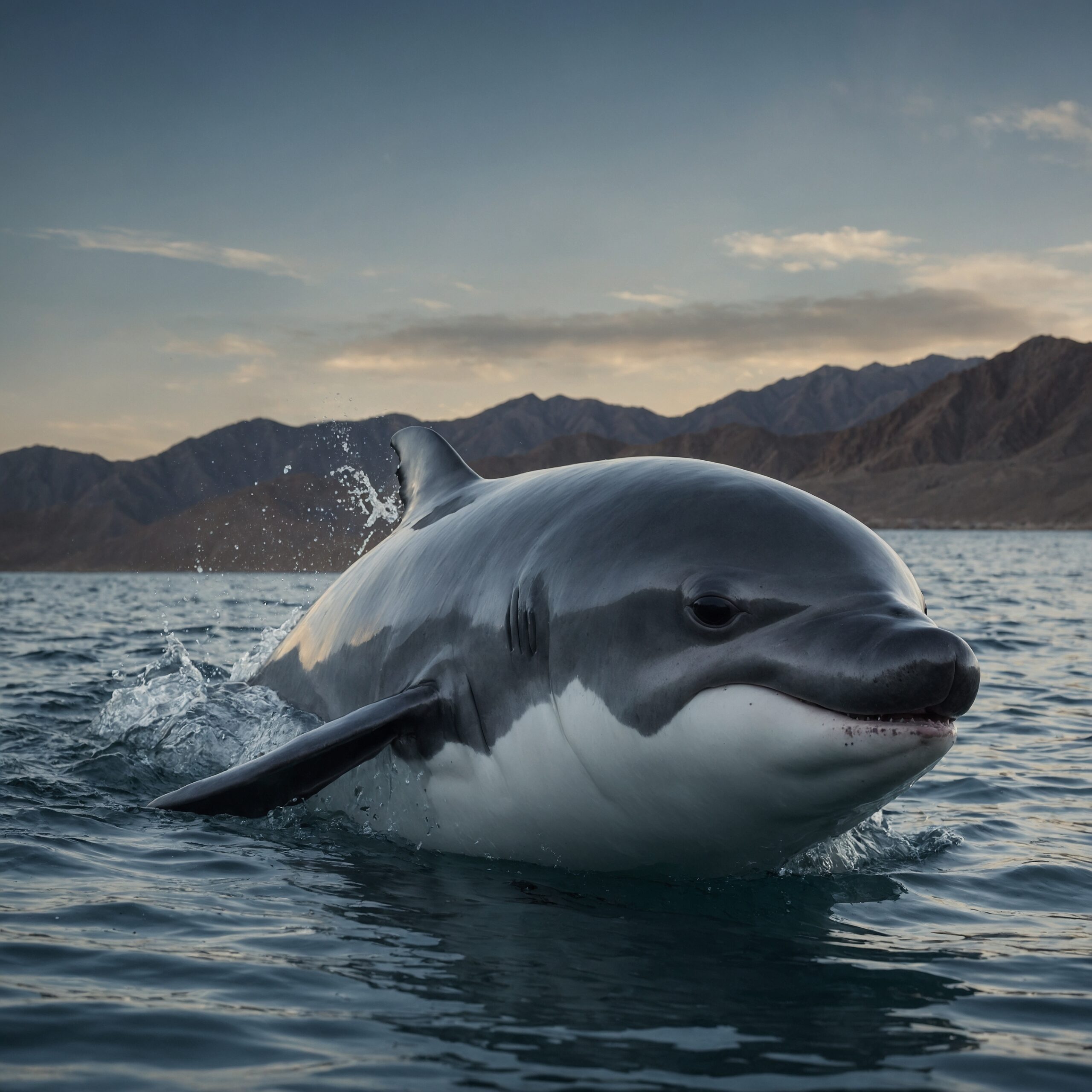
The vaquita is a small porpoise found only in the northern part of the Gulf of California, Mexico. It is one of the most critically endangered marine species, with fewer than 10 individuals remaining. Their population has drastically declined due to illegal fishing practices, particularly gillnets used to catch another endangered species, the totoaba fish. Conservation efforts are urgently needed to prevent the vaquita from becoming extinct, but their survival remains uncertain as illegal fishing continues in their habitat.
Hawaiian Monk Seal
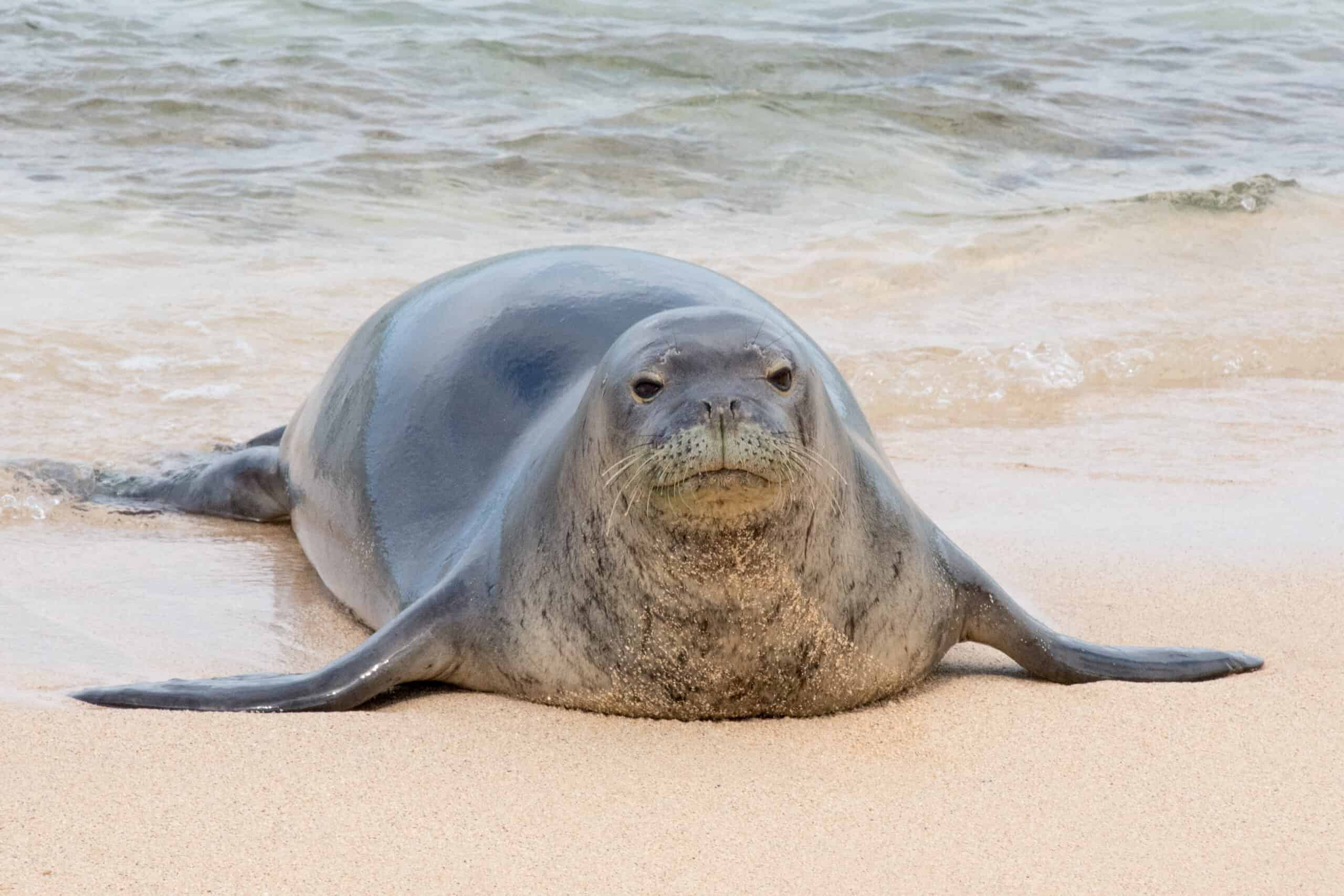
The Hawaiian monk seal is a rare species found exclusively in the Hawaiian Islands. This seal faces numerous threats, including entanglement in fishing gear, loss of habitat, and disease. Only around 1,400 individuals remain in the wild. Conservationists work tirelessly to protect them through habitat restoration, rescue efforts, and regulations to reduce human impact. Despite these efforts, the population is still struggling to recover, but the Hawaiian monk seal is a symbol of hope for marine conservation.
Blue Whale
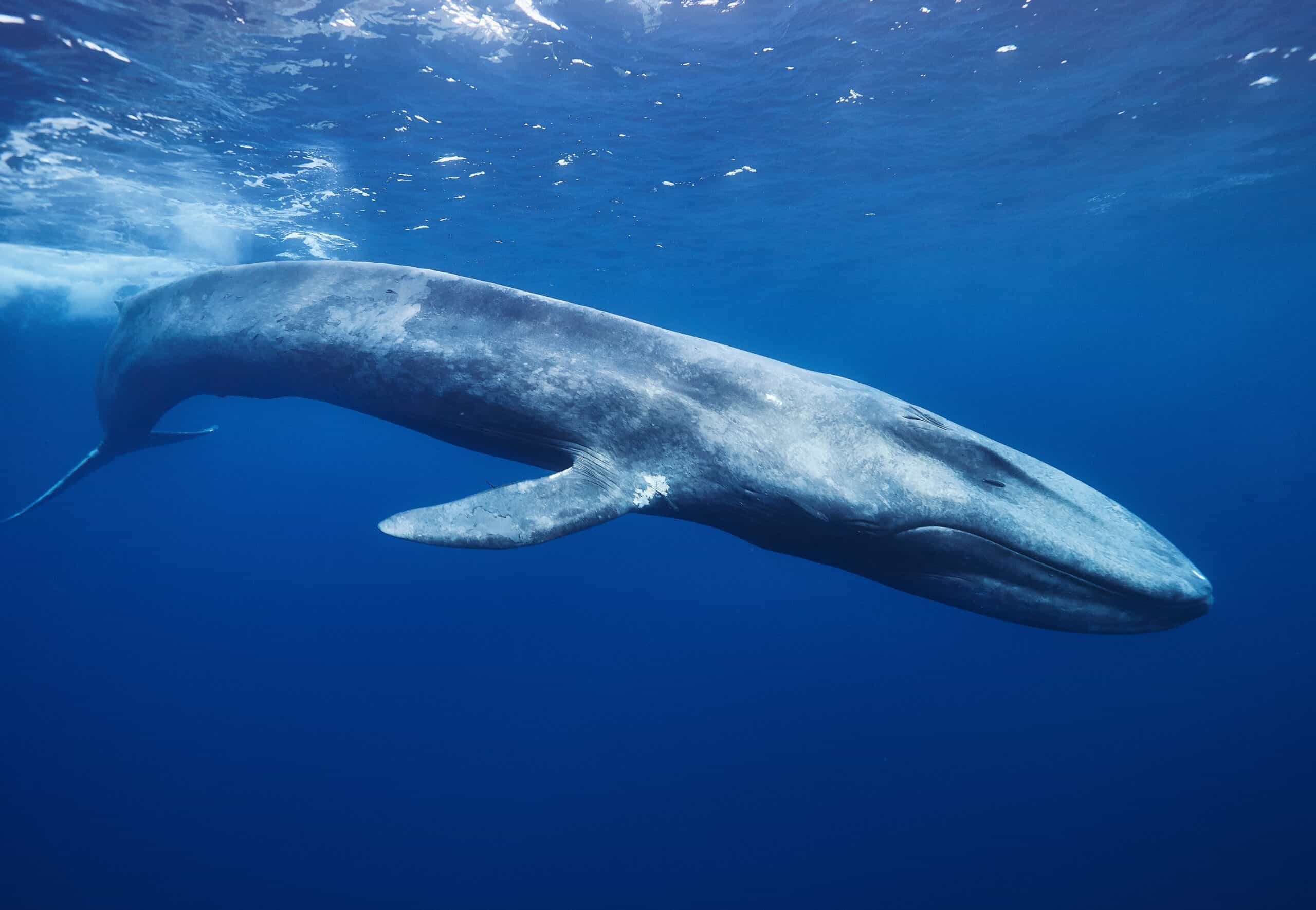
The blue whale is the largest animal on the planet, reaching up to 100 feet in length and weighing up to 200 tons. Found in oceans worldwide, the blue whale population has been severely impacted by commercial whaling. Although the practice has been banned, blue whales still face threats from ship strikes and entanglement in fishing gear. Estimates suggest there are around 10,000 to 25,000 blue whales left. Conservation efforts focus on reducing human impact and protecting their habitats.
Hawksbill Sea Turtle
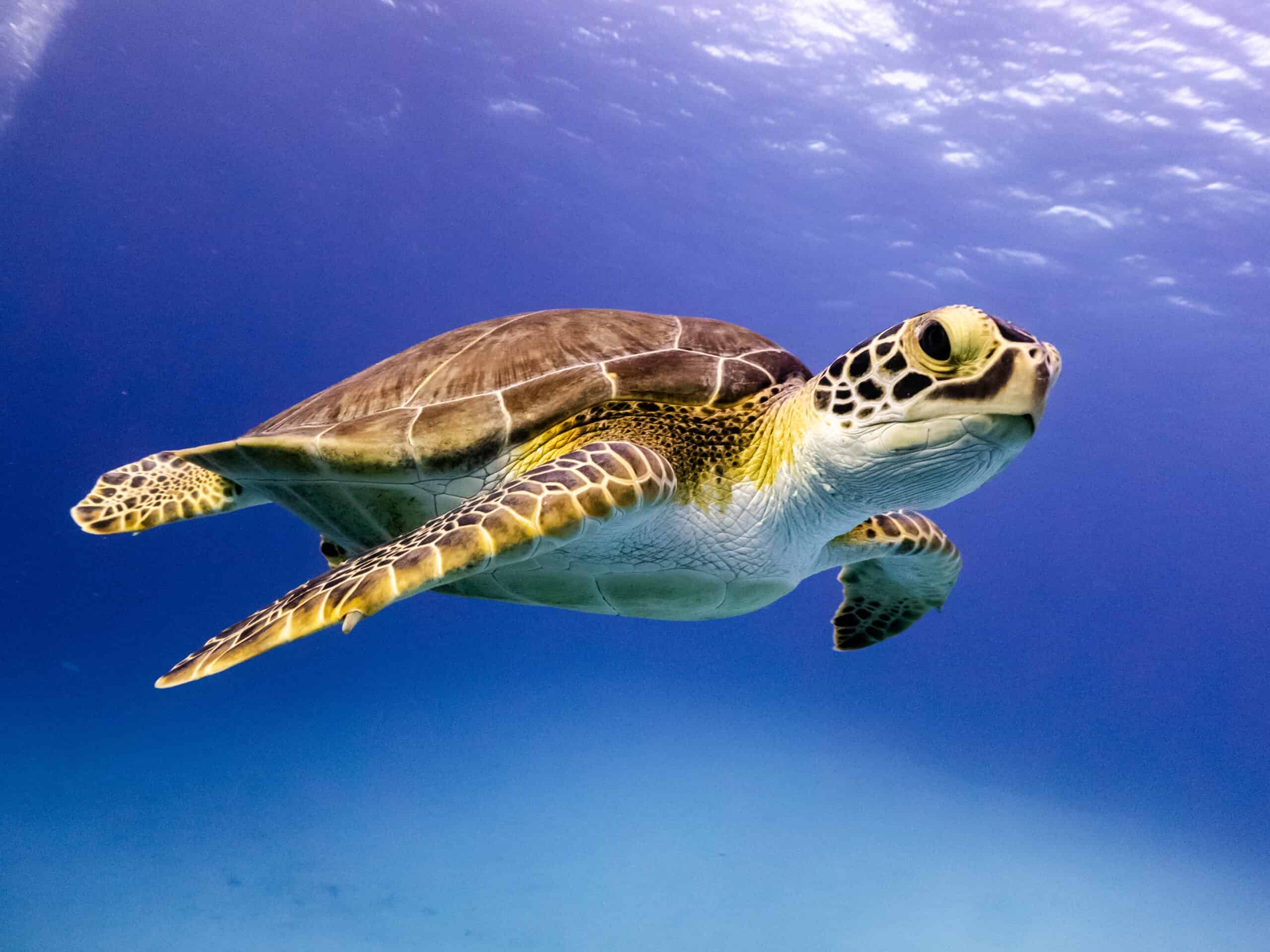
Hawksbill sea turtles are found in tropical waters around coral reefs and mangroves, primarily in the Atlantic, Pacific, and Indian Oceans. Their beautiful, patterned shells have made them a target for illegal poaching. Habitat loss and climate change also threaten their survival. It’s estimated that fewer than 25,000 nesting females remain. Conservation programs aim to protect their nesting sites and prevent illegal trade, but the Hawksbill’s future remains uncertain.
Green Sea Turtle
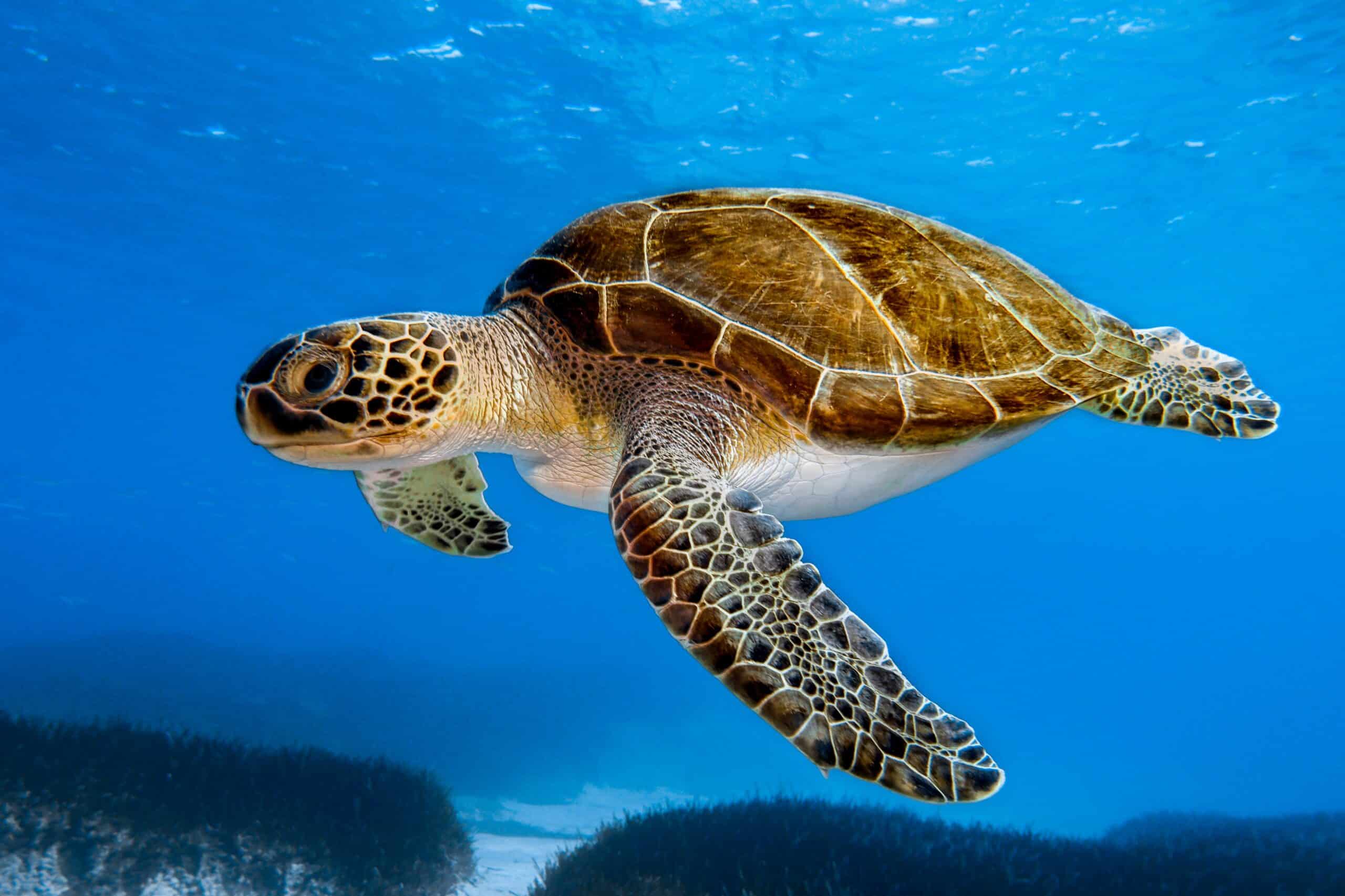
Green sea turtles are widespread, inhabiting subtropical and tropical waters worldwide. They face numerous challenges, including poaching, habitat destruction, and climate change. Their populations have declined significantly, but conservation efforts have helped some areas see a slow recovery. It’s estimated that there are around 85,000 to 90,000 nesting females left globally. Protecting nesting sites and reducing plastic pollution are key strategies to help the species survive.
Southern Resident Killer Whale (Orca)
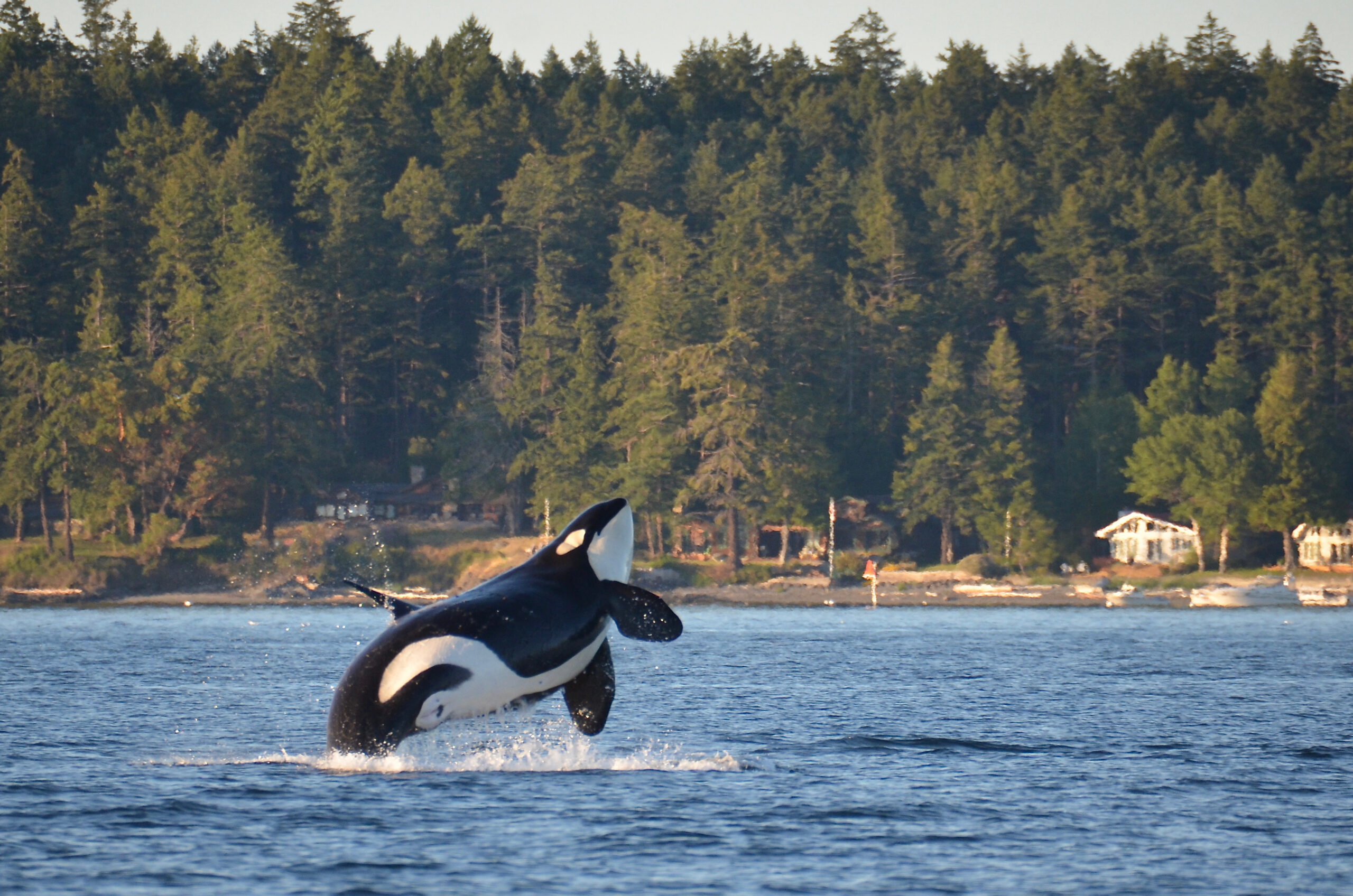
The Southern Resident Killer Whale is a unique population of orcas found in the northeastern Pacific Ocean, particularly around Washington and British Columbia. Their numbers have dropped to around 75 individuals due to lack of food, pollution, and boat traffic. These orcas rely on Chinook salmon, whose population is also in decline. Efforts to recover the orca population focus on restoring salmon runs and limiting human interference in their habitat.
North Atlantic Right Whale

The North Atlantic right whale is one of the most endangered whale species, with fewer than 350 individuals remaining. Found along the eastern coasts of the United States and Canada, this whale is highly vulnerable to ship strikes and entanglement in fishing gear. Despite international protection efforts, their numbers continue to decrease. Conservationists are focusing on reducing these human threats and improving whale monitoring to help ensure their survival.
Leatherback Sea Turtle
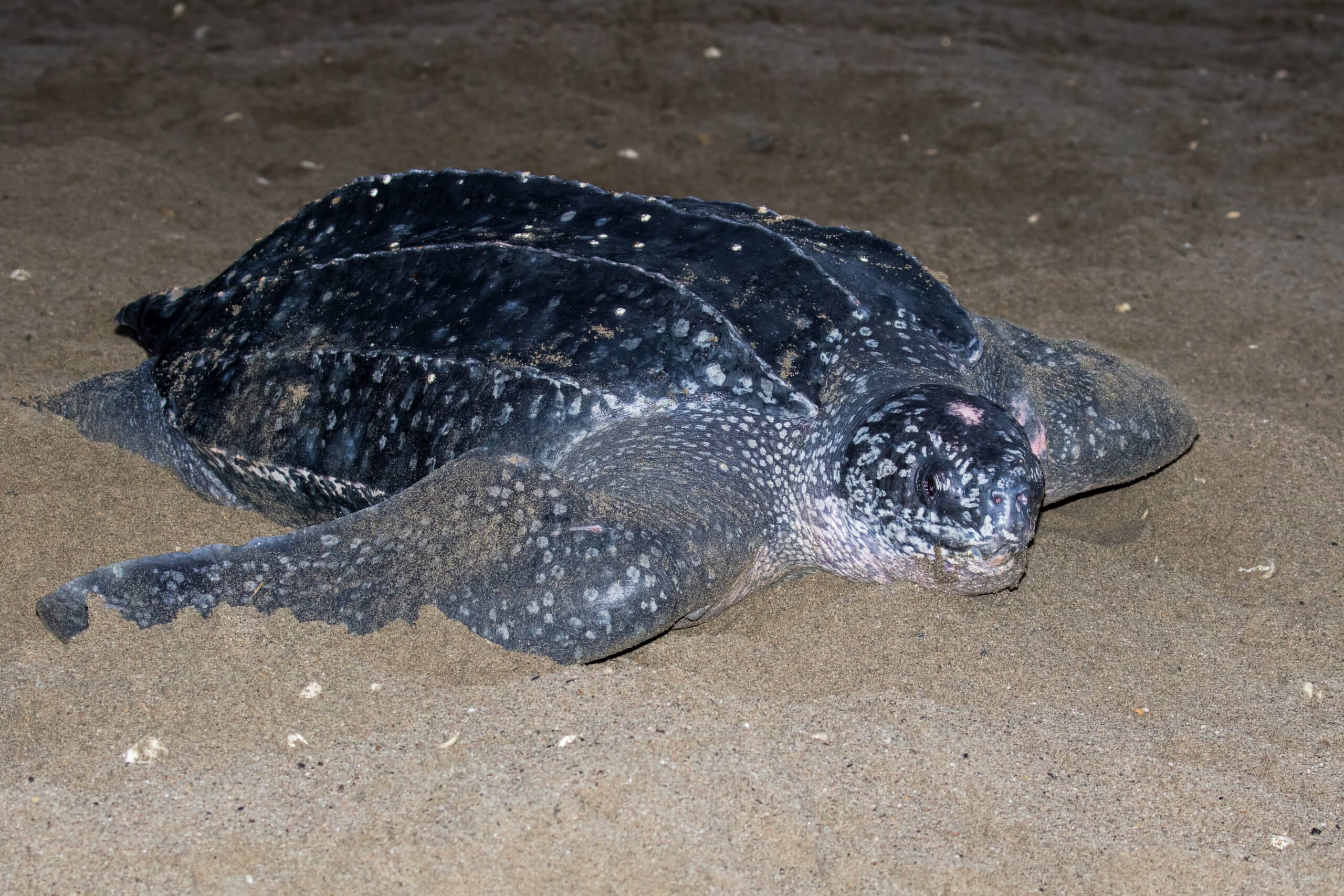
Leatherback sea turtles are the largest of all sea turtles, growing up to 7 feet long and weighing up to 2,000 pounds. They are found in the Atlantic, Pacific, and Indian Oceans, but their population is under threat from poaching, plastic pollution, and fishing gear entanglements. There are an estimated 34,000 to 36,000 nesting females left worldwide. Conservation programs focus on protecting nesting beaches and reducing bycatch to prevent further population decline.
Whale Shark
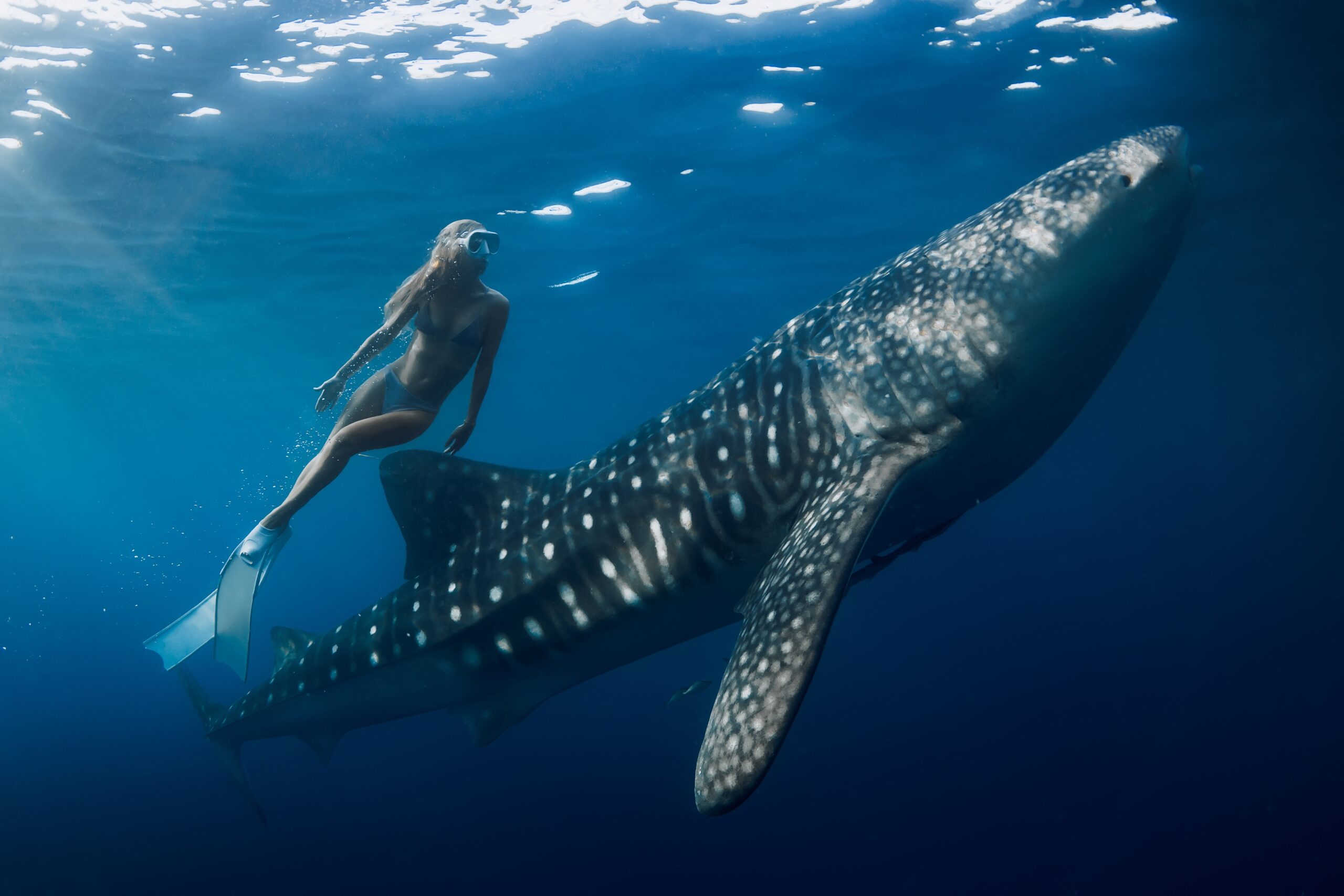
The whale shark is the largest fish in the ocean, reaching up to 40 feet in length. They are primarily found in tropical and warm temperate seas, including areas around the Philippines, Mexico, and Australia. Despite their size, whale sharks are filter feeders, consuming plankton and small fish. Population estimates are difficult, but the species is declining due to bycatch and habitat destruction. Conservation efforts are ongoing, but their slow reproductive rate makes recovery challenging.
Scalloped Hammerhead Shark
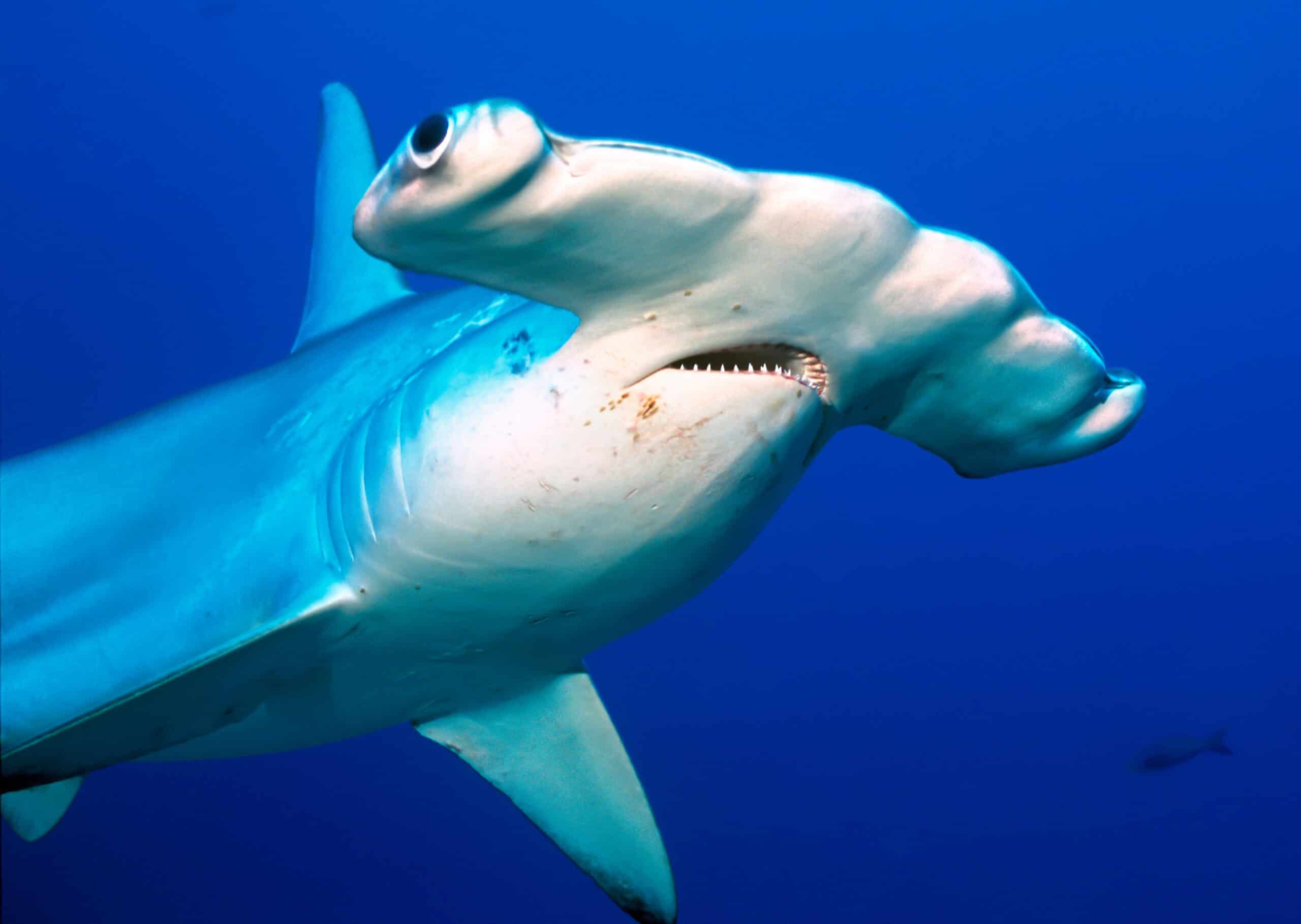
Scalloped hammerhead sharks are recognizable by their distinct hammer-shaped heads. They are found in coastal waters and along continental shelves in both tropical and temperate regions, such as the Atlantic and Indian Oceans. Their numbers have dropped drastically due to overfishing for their fins and accidental capture in fishing gear. While exact population numbers are unclear, they have declined by up to 90% in some regions. International protections are in place, but recovery remains slow.
Napoleon Wrasse

The Napoleon wrasse is a large, colorful reef fish found in the Indo-Pacific, particularly around coral reefs in the Red Sea and the Great Barrier Reef. These fish are highly sought after for the live reef fish trade and are considered a delicacy in some cultures. The global population is decreasing, with around 50% of Napoleon wrasse habitats now affected by overfishing and habitat loss. Conservation efforts include fishing restrictions, but illegal trade still poses a significant threat.
Dugong

Dugongs are large marine mammals closely related to manatees. They are found in coastal waters of the Indian and western Pacific Oceans, particularly around Australia and Southeast Asia. Dugongs graze on seagrass meadows, but their numbers have declined due to habitat destruction, fishing nets, and hunting. There are fewer than 100,000 individuals left, and many populations are isolated and fragmented. Conservation programs focus on protecting seagrass habitats and reducing human threats.
Loggerhead Sea Turtle
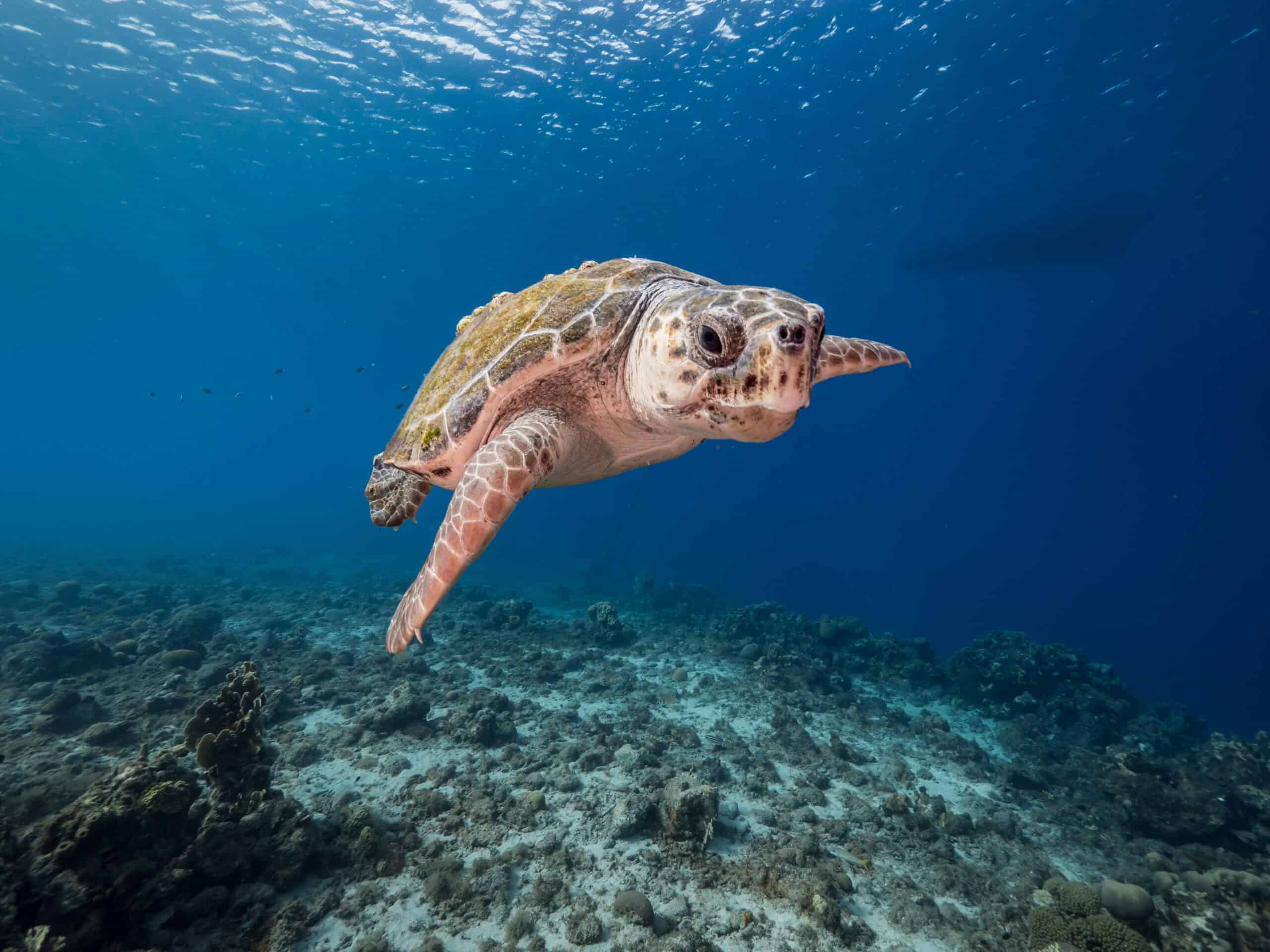
Loggerhead sea turtles inhabit subtropical and temperate oceans worldwide. They are known for their long migrations between nesting and feeding grounds. Loggerhead populations have declined due to bycatch in fishing gear, habitat loss, and climate change. It is estimated that there are around 50,000 nesting females left globally. Protection of nesting beaches and efforts to reduce bycatch are critical to their survival, but challenges remain in safeguarding this species.
Atlantic Bluefin Tuna
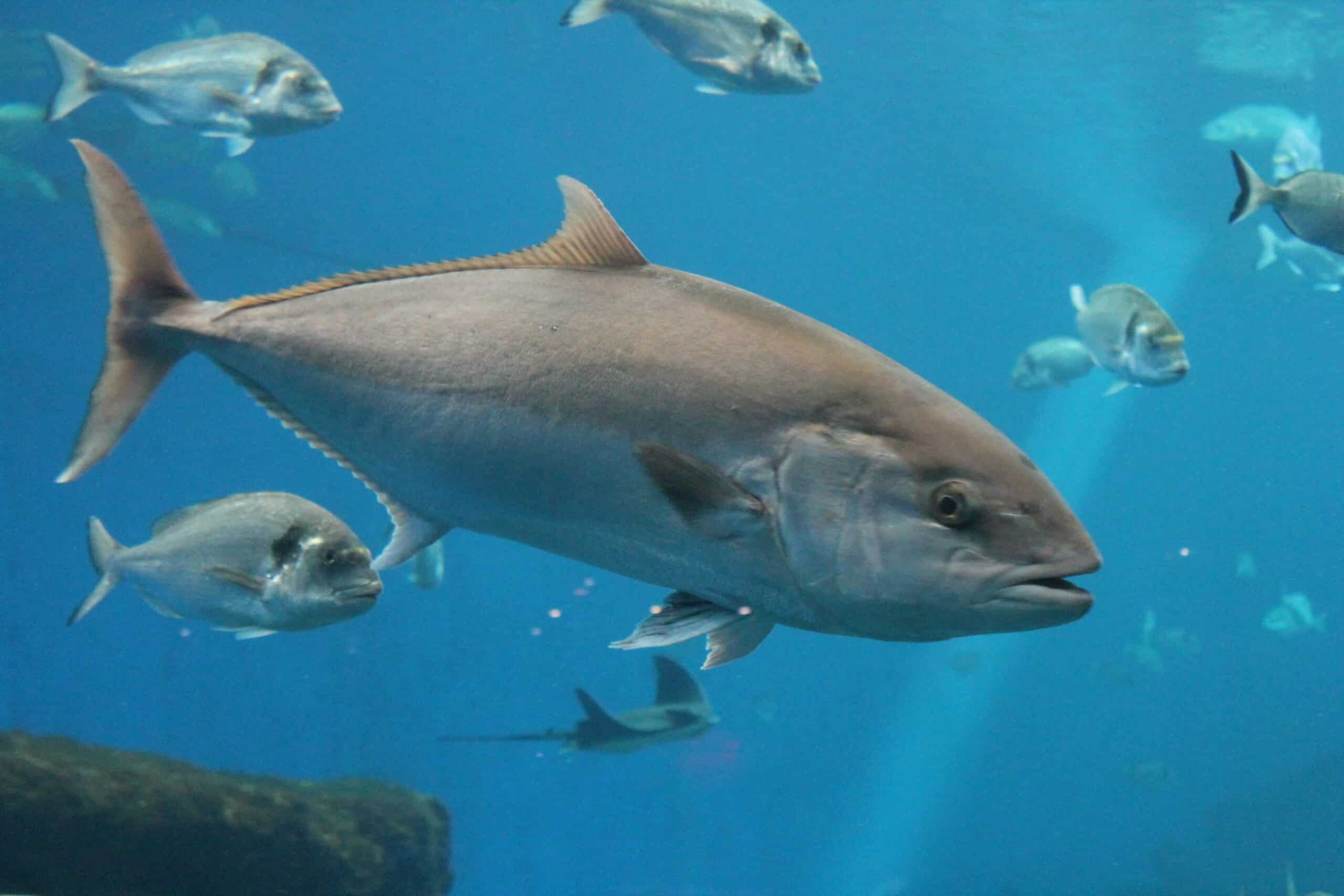
The Atlantic bluefin tuna is a highly prized species for its meat, particularly in sushi and sashimi markets. Found in the Atlantic Ocean and the Mediterranean Sea, this fish can weigh over 1,000 pounds and swim at remarkable speeds. Overfishing has caused a dramatic decline in their population, with estimates suggesting a reduction of up to 80% over the past few decades. Strict fishing quotas have been introduced, but illegal fishing continues to threaten their recovery.
Shortfin Mako Shark
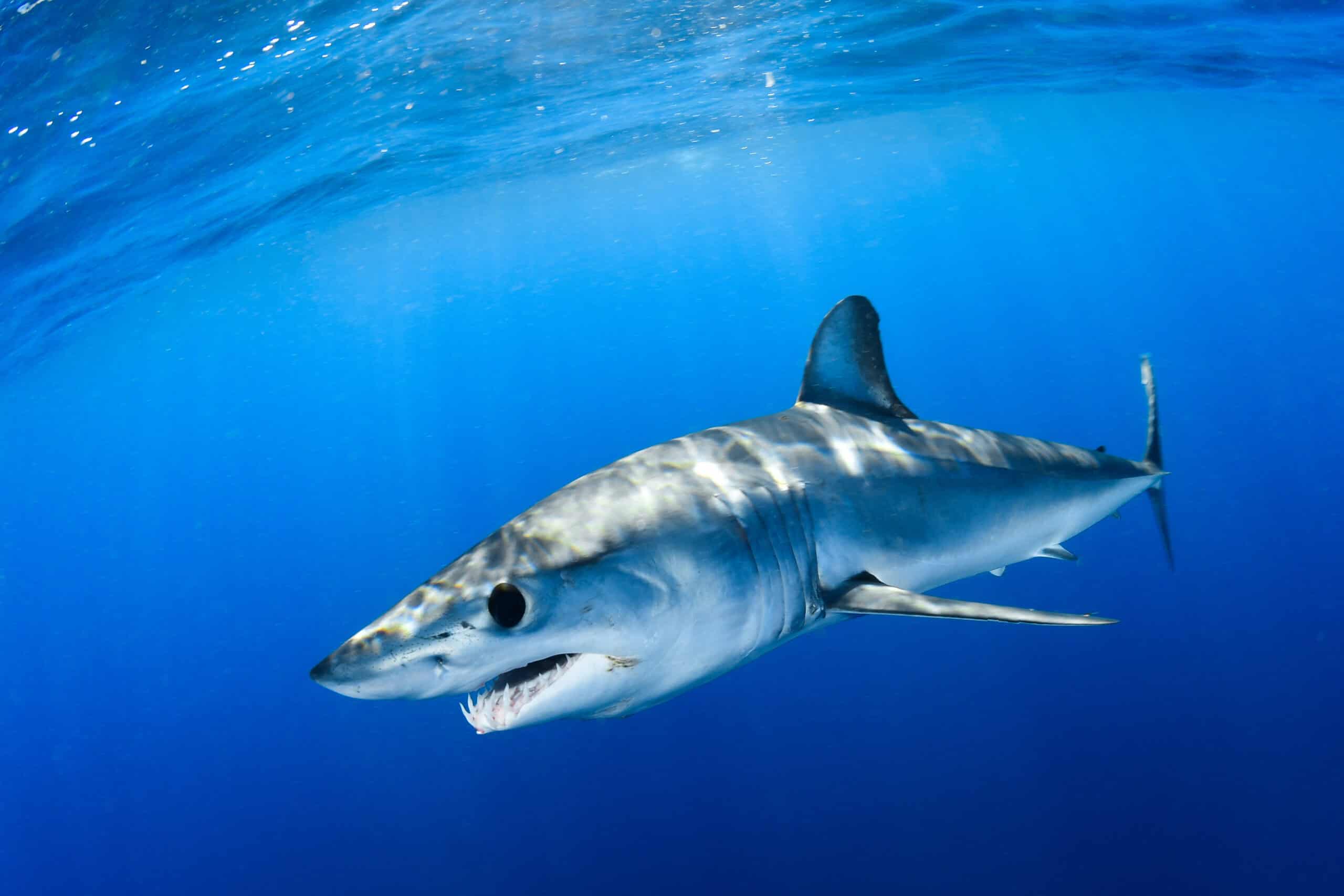
The shortfin mako shark is one of the fastest sharks in the ocean, capable of reaching speeds of up to 45 miles per hour. Found in tropical and temperate waters worldwide, this species is highly sought after for its meat and fins. Overfishing has led to a significant decline in shortfin mako populations, and some regions have reported an 80% drop in numbers. Conservation efforts are focused on reducing bycatch and establishing fishing restrictions.
Chinese River Dolphin (Baiji)
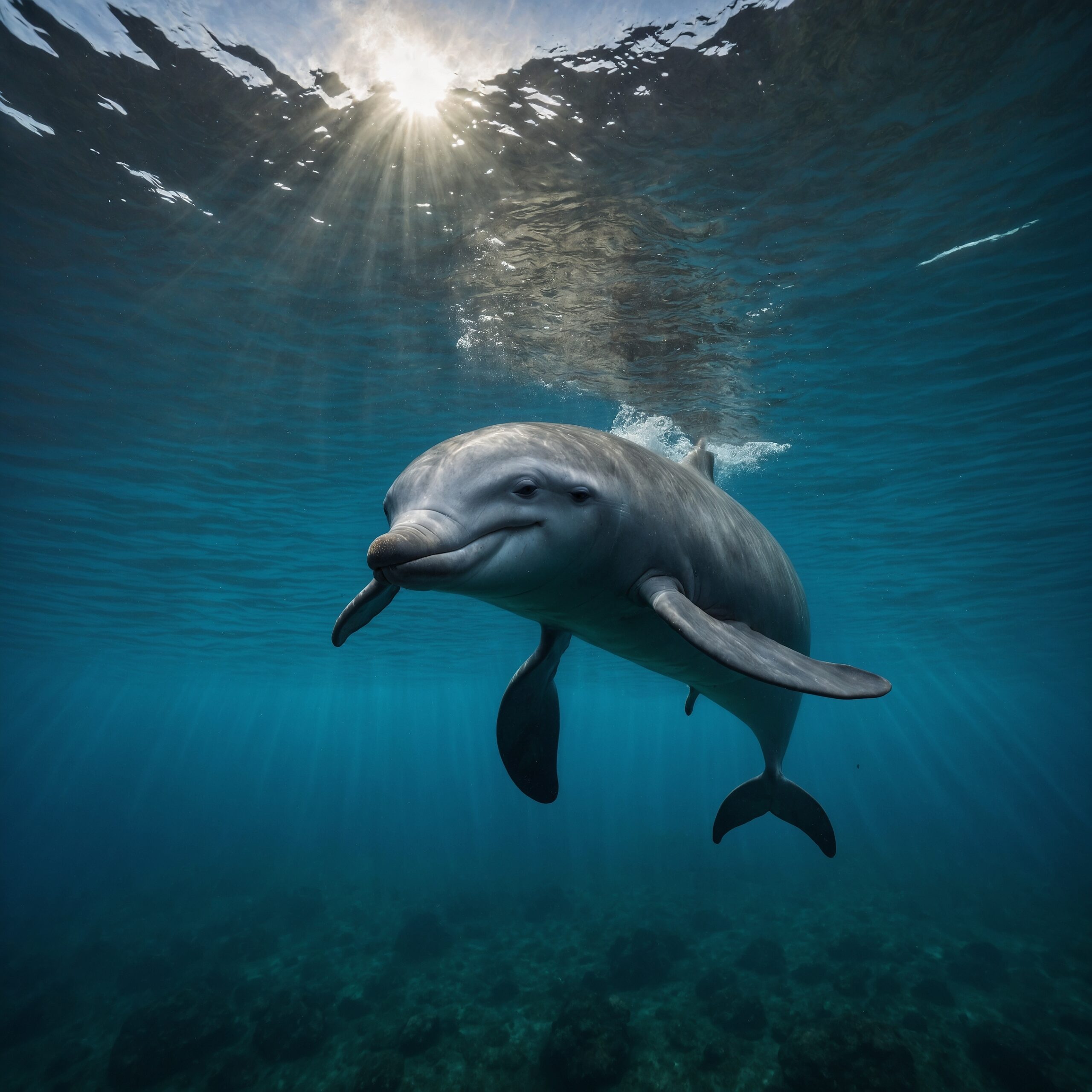
The Chinese river dolphin, also known as the baiji, once thrived in the Yangtze River in China. Unfortunately, due to heavy pollution, overfishing, and habitat loss, the baiji is now considered functionally extinct. Fewer than 100 individuals were reported in the 1990s, and recent surveys have failed to locate any surviving members of the species. Despite efforts to protect them, it is likely that the baiji has already been lost, serving as a stark reminder of the consequences of environmental degradation.
Galápagos Penguin
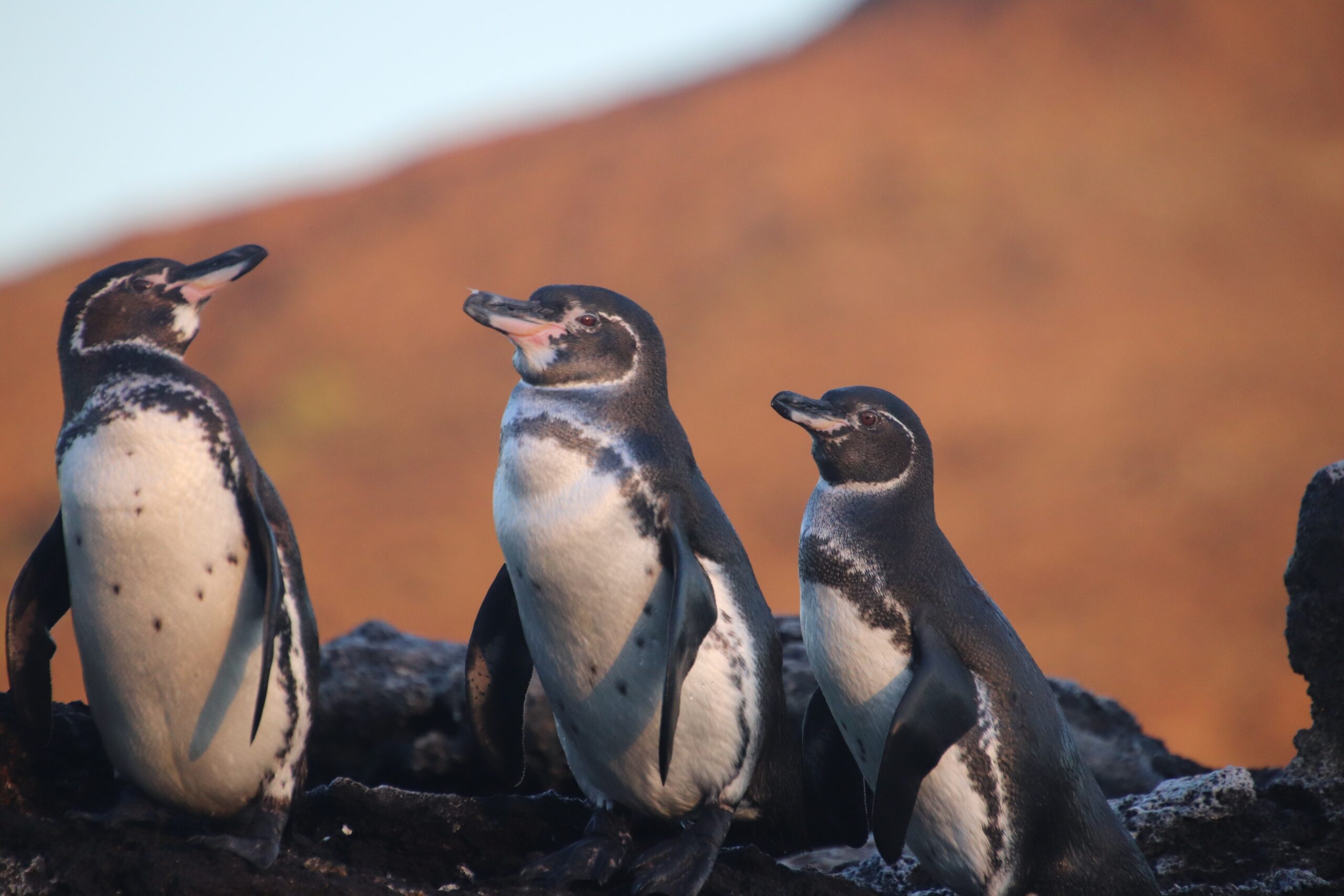
The Galápagos penguin is the only penguin species that lives north of the equator. Found on the Galápagos Islands, it inhabits the cool waters of the Pacific Ocean, sustained by the nutrient-rich Humboldt Current. The population is currently estimated to be around 2,000 individuals. Climate change, food scarcity, and introduced predators threaten their survival. Conservation efforts focus on habitat protection and reducing the impact of climate shifts.
Beluga Sturgeon
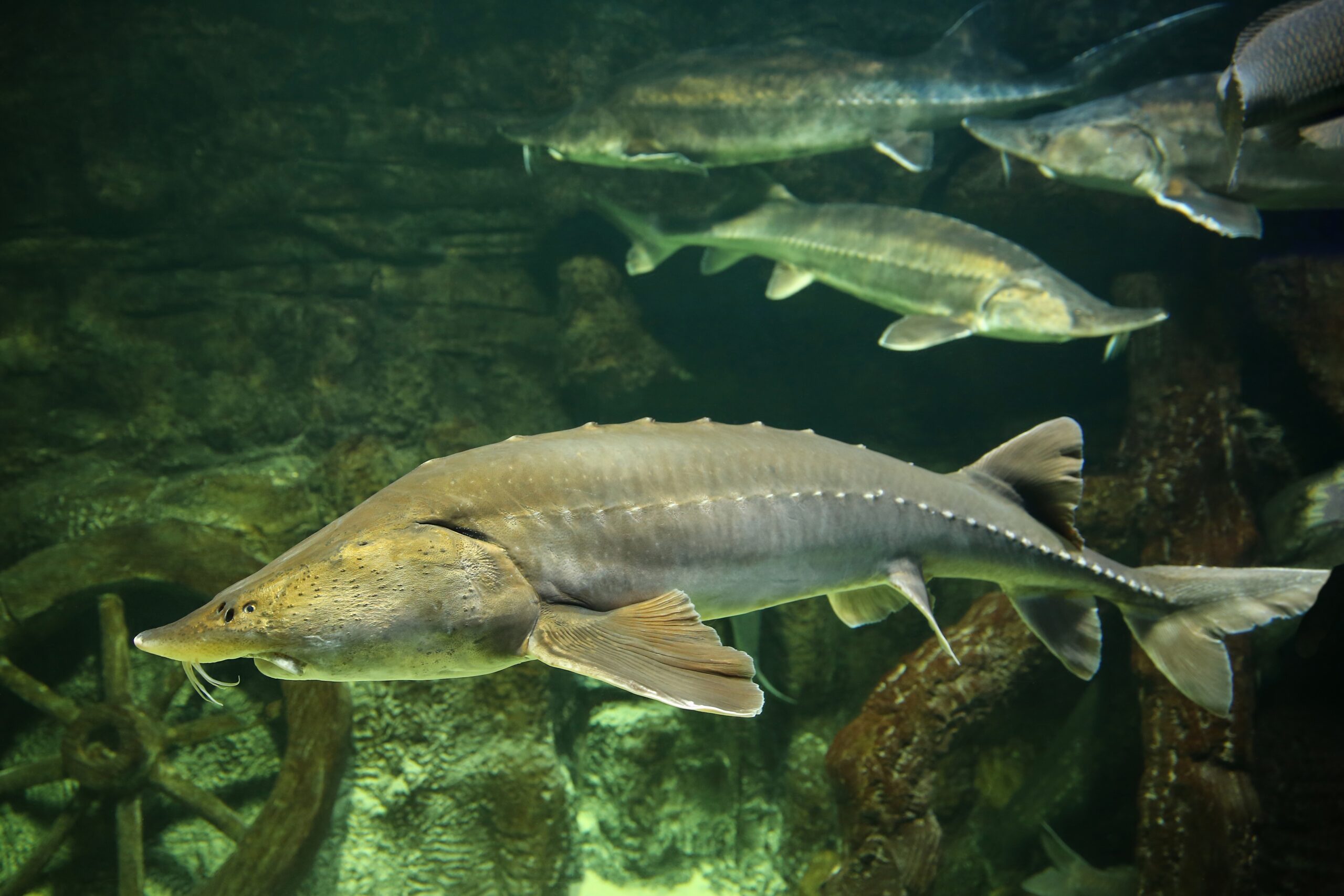
The beluga sturgeon is a large fish that can grow up to 20 feet long. It is primarily found in the Caspian and Black Seas, as well as in connected rivers like the Danube. Overfishing, particularly for their valuable caviar, has driven this species to the brink of extinction. Fewer than 3,000 individuals remain in the wild. Conservation initiatives aim to regulate caviar trade and restore natural habitats, but illegal fishing still poses a serious threat.
Kemp’s Ridley Sea Turtle
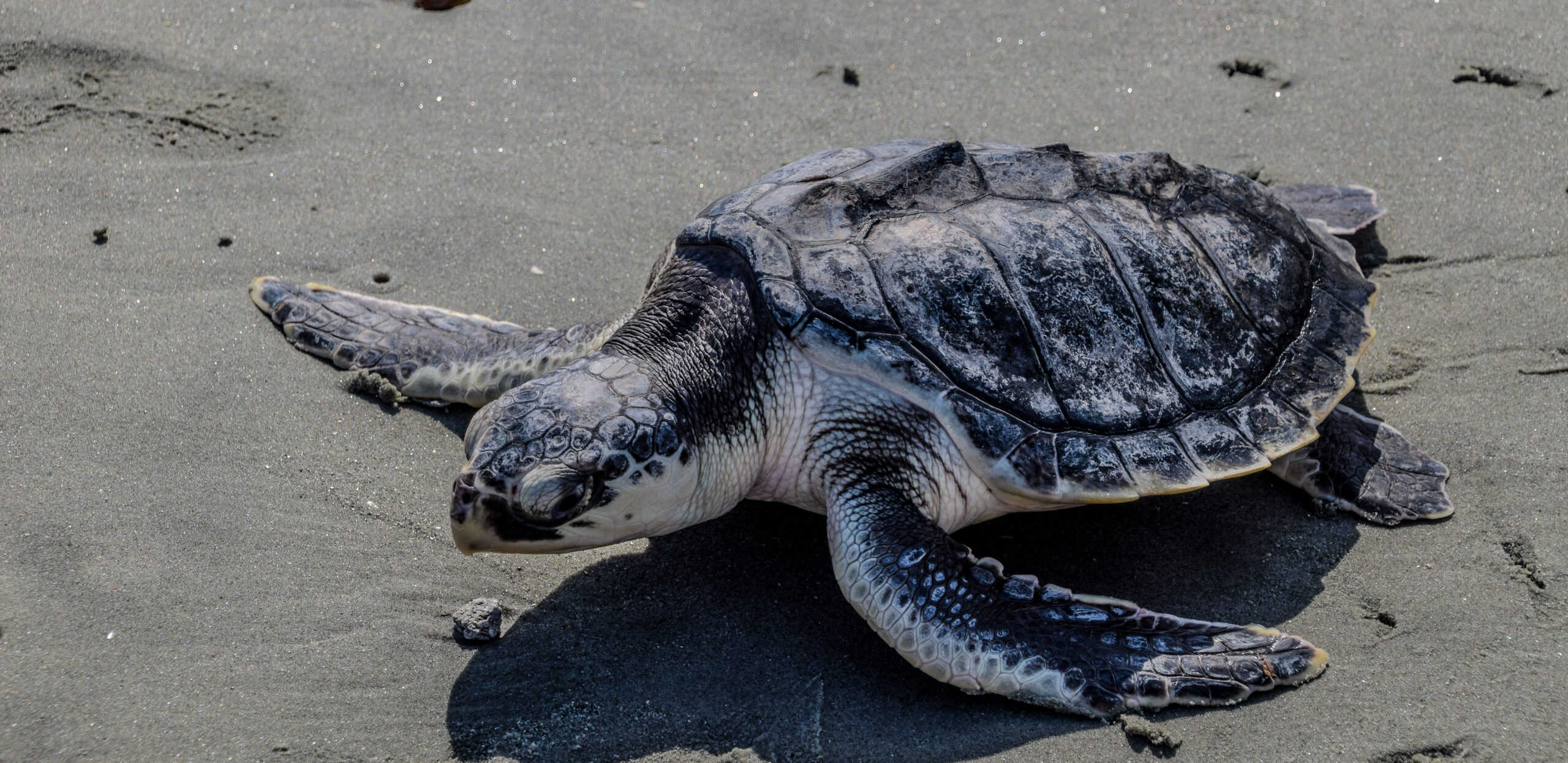
Kemp’s Ridley sea turtle is the most endangered sea turtle species, primarily found in the Gulf of Mexico. These turtles are known for their synchronized nesting, called arribadas, which occur on a few specific beaches. With fewer than 7,000 nesting females left, they face threats from bycatch in fishing nets, oil spills, and habitat loss. Conservation efforts have helped stabilize their numbers, but they remain highly vulnerable.
Steller Sea Lion
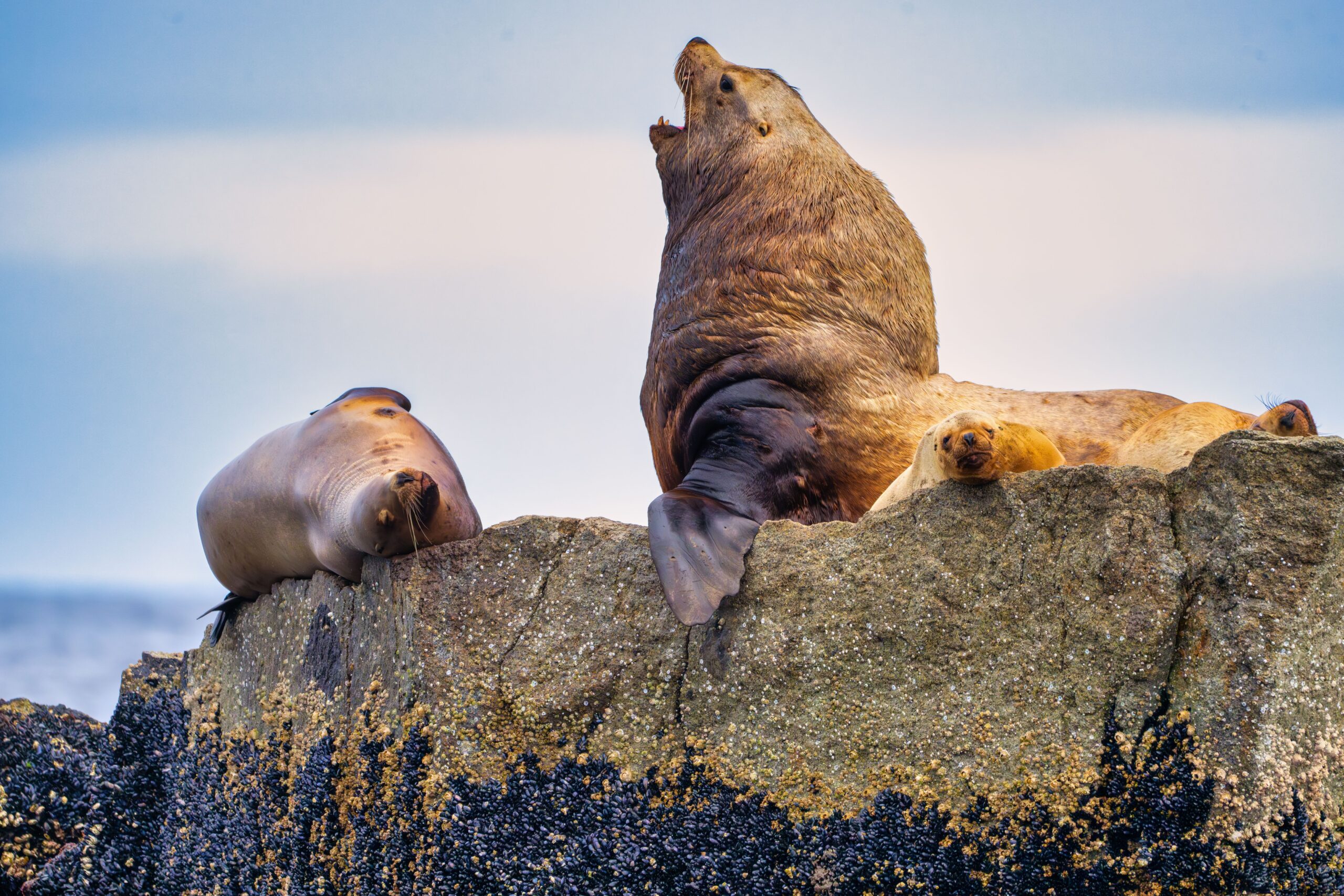
Steller sea lions are the largest of all sea lions and are found along the northern Pacific Rim, from Japan to California. Overfishing, climate change, and human disturbance have led to their population decline, particularly in the western part of their range. There are approximately 70,000 individuals left in the wild, but some populations are still declining. Conservation efforts focus on protecting their habitats and limiting human impact.
Giant Manta Ray

The giant manta ray is a majestic species with a wingspan that can reach up to 23 feet. They are found in tropical and subtropical waters around the world, often near coral reefs. Manta rays are threatened by overfishing, especially for their gill plates, which are used in traditional medicine. The global population is difficult to estimate, but it is believed to be declining. Conservationists are working to regulate fisheries and protect critical habitats.
Australian Sea Lion

The Australian sea lion is native to the southern and western coasts of Australia. This species has one of the smallest populations of any sea lion, with only about 14,000 individuals left. They face threats from entanglement in fishing gear, habitat degradation, and climate change. Recovery efforts focus on reducing bycatch, protecting breeding sites, and monitoring population trends to ensure their survival.
Atlantic Goliath Grouper
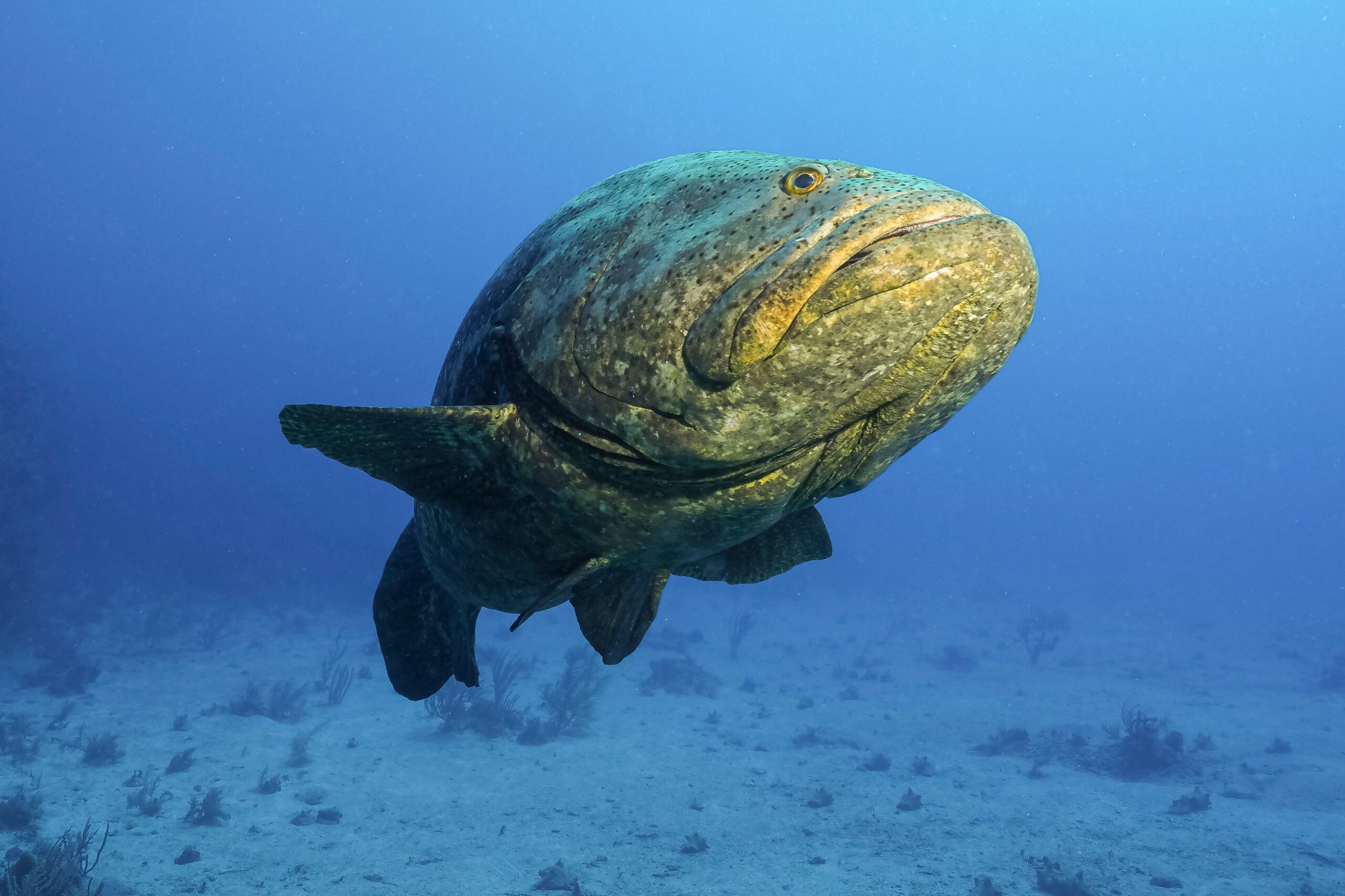
The Atlantic Goliath grouper is a large, slow-growing fish found in shallow tropical waters off the coasts of Florida, the Caribbean, and Brazil. Overfishing has caused their numbers to plummet, with only a few thousand remaining. These fish are highly sought after for their size, but strict fishing regulations have been implemented to protect them. Continued conservation is needed to ensure their population can recover and thrive once again.
This article originally appeared on Rarest.org.
More from Rarest.org
10 Oldest Wooden Rollercoasters In The World

Wooden roller coasters have been thrilling riders for over a century, with some of the oldest still in operation today. Read More.
9 Largest Chicken Breeds in the World

When it comes to raising chickens, size can make a big difference. Read More.
9 Unexplored Ocean Trenches Holding Earth’s Deepest Secrets
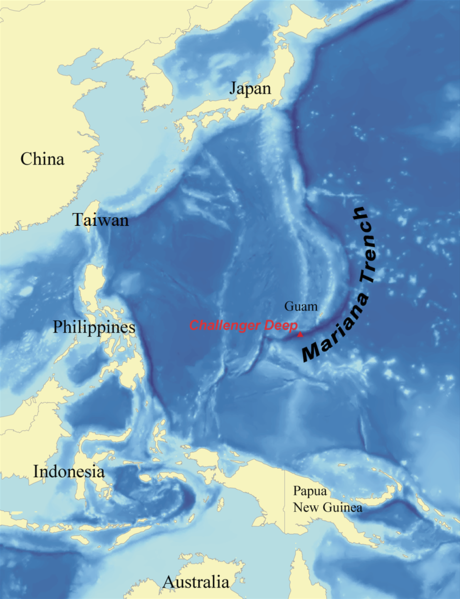
The ocean’s deepest trenches remain some of the most unexplored and mysterious places on Earth. Read More.
